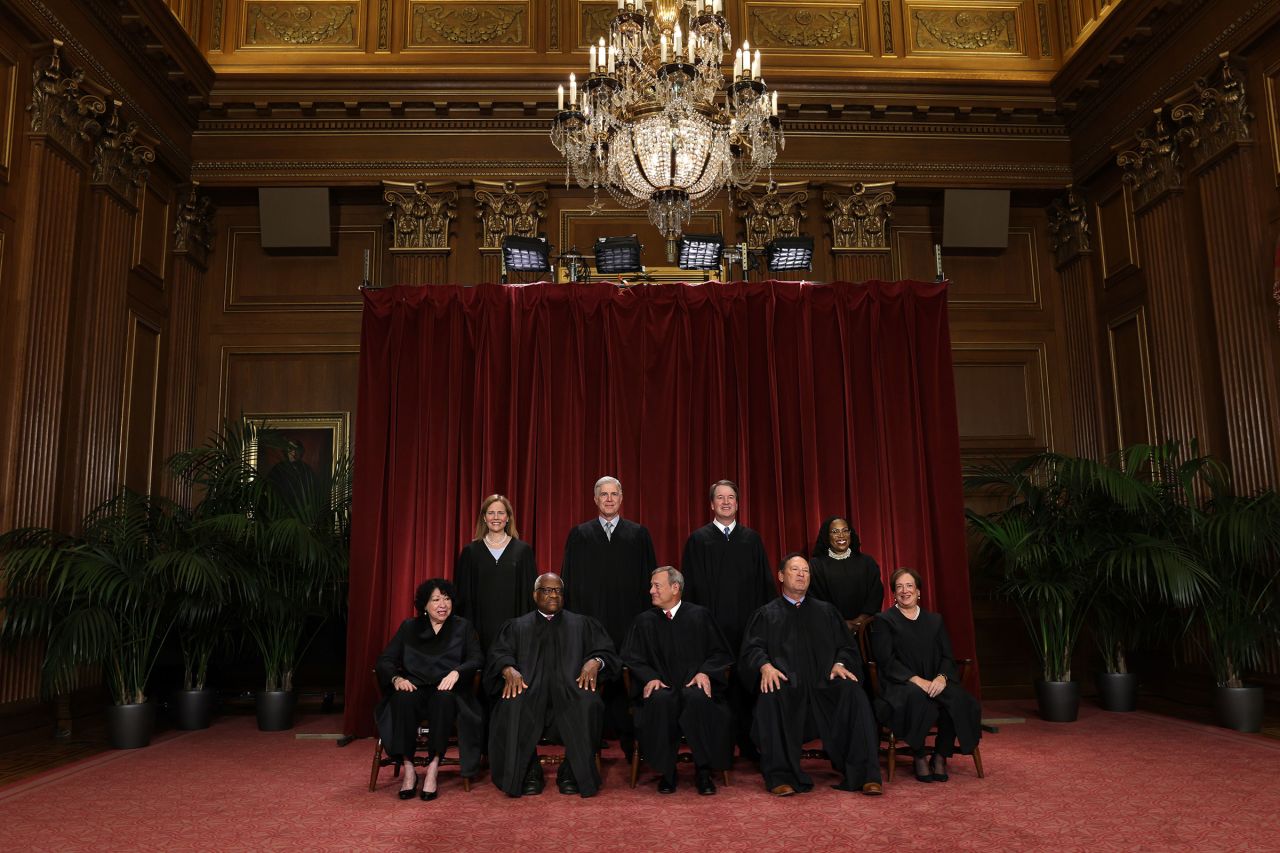Alito And Roberts: A Look Back At Two Decades Of Judicial Decisions

Table of Contents
The Roberts Court's Approach to Judicial Review
Chief Justice John Roberts' tenure has been marked by a nuanced approach to judicial review, often balancing his conservative ideology with a concern for maintaining the Court's legitimacy.
Emphasis on Constitutional Originalism
Roberts is often characterized as a proponent of constitutional originalism, a judicial philosophy that interprets the Constitution based on the original understanding of its framers. This approach emphasizes textualism, focusing on the plain meaning of the Constitution's text, and original intent, seeking to understand the framers' intentions. This has significantly influenced case outcomes during his chief justiceship.
- District of Columbia v. Heller (2008): This landmark case affirmed the individual's right to bear arms, a decision heavily influenced by originalist arguments.
- Citizens United v. FEC (2010): This controversial case significantly altered campaign finance laws, reflecting a textualist interpretation of free speech rights. Other cases showcasing this textualist approach include those regarding the Commerce Clause and the scope of federal power.
Maintaining Court Legitimacy
Despite his conservative leanings, Roberts has demonstrated a pragmatic approach, sometimes siding with the liberal wing to prevent the Court from appearing overly partisan. This strategy aims to preserve the Court's legitimacy and authority in the eyes of the public.
- National Federation of Independent Business v. Sebelius (2012): Roberts' pivotal vote upholding the Affordable Care Act, although based on a different legal rationale than the liberal justices, demonstrated a willingness to prioritize the Court's institutional standing.
- Several cases involving voting rights and affirmative action also reveal instances where Roberts sought to find common ground or a more moderate position, highlighting potential conflicts between his personal judicial philosophy and the need for the Court's perceived impartiality.
Justice Alito's Conservative Jurisprudence
Associate Justice Samuel Alito's judicial philosophy is firmly rooted in conservative legal thought. His decisions and dissenting opinions have significantly influenced the direction of American law, particularly in areas such as religious freedom and abortion rights.
Key Decisions Shaping Conservative Legal Thought
Justice Alito has played a key role in shaping landmark decisions with far-reaching implications. He often writes concurring opinions that clarify and strengthen the conservative positions established by the majority. His dissenting opinions have also been highly influential, often foreshadowing future shifts in the Court's jurisprudence.
- Obergefell v. Hodges (2015) (Dissenting): Alito's dissent in this case, which legalized same-sex marriage, clearly articulated the arguments against the majority's holding and has shaped subsequent debates.
- Whole Woman's Health v. Hellerstedt (2016) (Dissenting): This case involved abortion restrictions, and Alito's dissent provided a strong basis for later challenges to abortion access.
- Bostock v. Clayton County (2020) (Dissenting): Alito's dissent in this case, which extended Title VII protections to LGBTQ+ employees, showed a reluctance to interpret statutes broadly.
Impact on Areas Like Religious Freedom and Abortion Rights
Alito's influence is particularly visible in cases concerning religious freedom and abortion rights. His conservative views have significantly impacted the legal landscape surrounding these contentious issues.
- Several cases involving religious exemptions from generally applicable laws reflect Alito's strong belief in the free exercise of religion.
- His role in Dobbs v. Jackson Women's Health Organization (2022), which overturned Roe v. Wade, represents the culmination of his long-standing views on abortion rights and has drastically altered the legal framework governing abortion access across the United States. His opinions in this area show a consistent and unwavering commitment to his interpretation of constitutional law.
Comparing and Contrasting their Judicial Philosophies
While both Justices Roberts and Alito are considered conservative, their approaches and priorities differ in subtle but significant ways.
Points of Agreement and Divergence
While both justices share a conservative orientation, their approaches to specific cases often diverge.
- In cases emphasizing states' rights, they frequently align. However, their differing prioritization of maintaining Court legitimacy versus establishing strong conservative precedents leads to subtle yet important differences in opinion.
- Instances where they've disagreed often relate to the appropriate balance between judicial restraint and activism, and how to best interpret originalist principles.
Long-term Impact on American Law
The lasting legacy of Roberts and Alito on American law is profound and multifaceted. Their decisions will continue to shape legal debates and outcomes for years to come.
- The impact of their decisions on issues such as gun control, campaign finance, religious freedom, and reproductive rights will undoubtedly be felt for generations. The changes in precedent set by many of their opinions will require further legal challenges and interpretations to fully understand their ultimate effects on the American legal landscape.
- Their interpretations of the Constitution have reshaped the balance of power between the federal government and the states, and between individual rights and government regulation.
Conclusion
This article has explored the significant impact of Chief Justice John Roberts and Associate Justice Samuel Alito on the Supreme Court's decisions over the past two decades. Their differing yet often overlapping approaches have reshaped American law, leaving a lasting legacy on critical areas like judicial review, religious freedom, and reproductive rights. Their individual judicial philosophies, while sometimes aligned, often diverge, creating a complex and multifaceted influence on the Court’s rulings. Understanding the nuances of their individual approaches is crucial for interpreting their impact on American law.
To delve deeper into the intricacies of Alito and Roberts Supreme Court Decisions, further research into individual cases and legal scholarship is encouraged. Understanding their jurisprudence is crucial for navigating the evolving landscape of American law.

Featured Posts
-
 Leeds Uniteds Championship Return Tottenham Loanee Shines
May 20, 2025
Leeds Uniteds Championship Return Tottenham Loanee Shines
May 20, 2025 -
 F1 Champions Backing Boosts Mick Schumachers Cadillac Chances
May 20, 2025
F1 Champions Backing Boosts Mick Schumachers Cadillac Chances
May 20, 2025 -
 Eyresi Efimereyonton Iatron Stin Patra Savvatokyriako
May 20, 2025
Eyresi Efimereyonton Iatron Stin Patra Savvatokyriako
May 20, 2025 -
 Navy Corruption Allegations Four Star Admirals Prosecution And Cultural Implications
May 20, 2025
Navy Corruption Allegations Four Star Admirals Prosecution And Cultural Implications
May 20, 2025 -
 Huuhkajien Kaellman Ja Hoskonen Jaettaevaet Puolan
May 20, 2025
Huuhkajien Kaellman Ja Hoskonen Jaettaevaet Puolan
May 20, 2025
